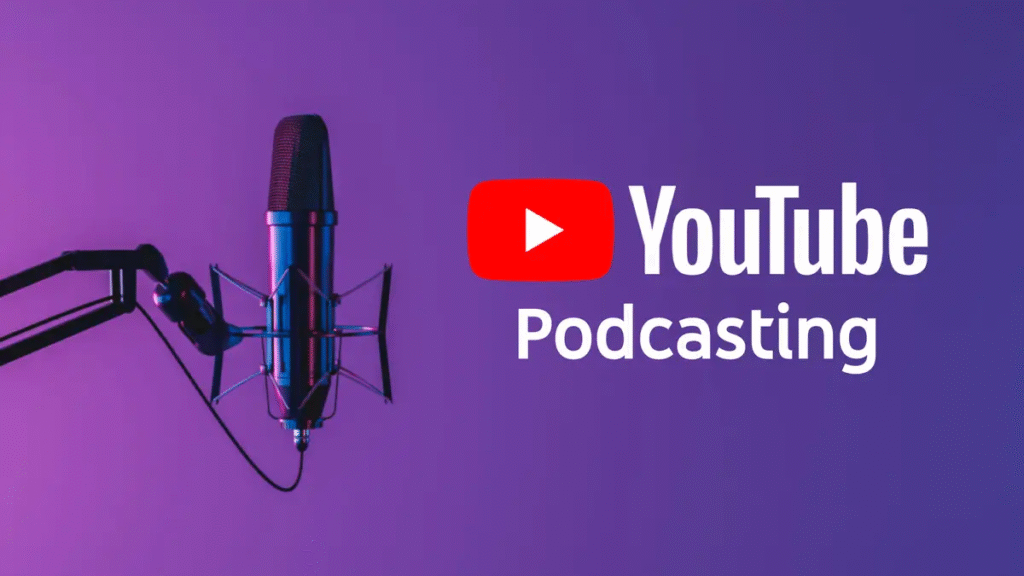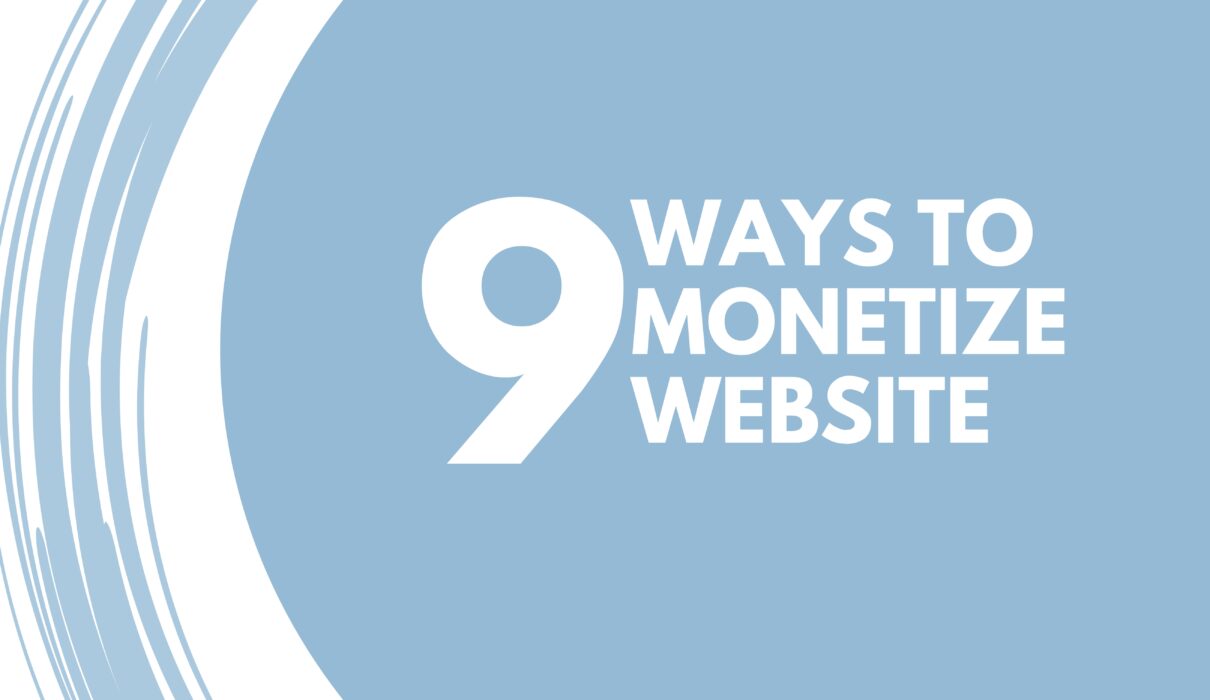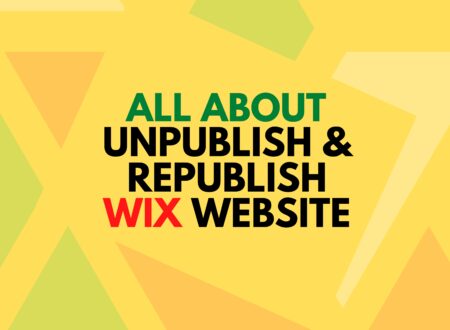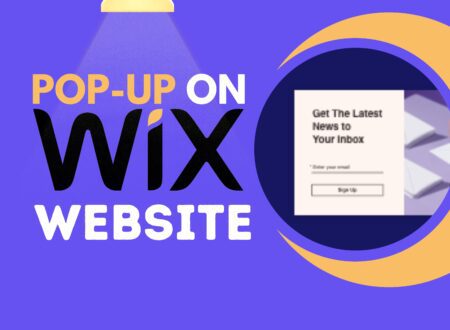Learn 9 proven ways to monetize a website or blog in 2025. From affiliate marketing to digital products, discover how to maximize your earnings online.
Monetizing a website through Google AdSense is not enough. There are thousands of other ways available in which you can try can maximize your earnings. After all, you had spent a lot of time and effort growing your site. Now it’s time to get back the reward. So, let’s explore how you can monetize a website.
Introduction
Making money online through a website or blog is no longer a dream—it’s a proven strategy thousands of entrepreneurs and creators use every day. With the right monetization methods, you can turn your blog into a reliable income stream. But with so many options, which ones truly maximize your earnings?
In this guide, we’ll explore 9 powerful and practical ways to monetize a website or blog in 2025. Whether you’re a beginner blogger or running a high-traffic site, these methods will help you unlock new income opportunities and build long-term online success.
Good to know: Here, you will learn many ways to monetize a website, but it doesn’t mean you will rush into every method at once. Take your time; build a reputation for your site to get profitable results.
9 Ways to Monetize a Website or Blog

Good to know: Here, you will learn many ways to monetize a website, but it doesn’t mean you will rush into every method at once. Take your time; build a reputation for your site to get profitable results.
1. Display Advertising (Google AdSense & Alternatives)

Display ads remain the simplest way to start earning. Platforms like Google AdSense, Mediavine, and Ezoic pay you based on clicks (CPC) or impressions (CPM). This works best for sites with consistent traffic.
It is one of the most popular and beginner-friendly ways to monetize a website or blog. It works by placing ads on your site and earning money whenever users view, click, or engage with those ads.
How Display Advertising Works
- Sign Up for an Ad Network
The most common choice is Google AdSense, but there are many alternatives.
Once approved, you get access to ad codes or plugins to place ads on your site.
- Ads Display on Your Website
Ads are shown automatically based on your site’s niche, content, and visitor behavior.
Example: A blog about solar energy may display ads for solar panels, eco-products, or energy-saving devices.
- You Earn Revenue
CPC (Cost Per Click): You earn each time a visitor clicks the ad.
CPM (Cost Per Mille): You earn based on impressions (per 1,000 views).
CPA (Cost Per Action): You earn when a visitor completes an action, like signing up or purchasing.
Why Choose Display Advertising?
Beginner-Friendly – Easy to set up, requires no technical skills.
Passive Income – Once ads are placed, they run automatically.
Contextual Targeting – Ads are matched to your content and audience.
Scalable – The more traffic you get, the higher your earnings.
Best Ad Networks for Bloggers (2025 Update)
- Google AdSense – Best for beginners, global reach, contextual ads.
- Ezoic – AI-powered optimization for higher earnings.
- Mediavine – High-paying network (requires 50k+ sessions/month).
- AdThrive – Premium publisher network (100k+ sessions/month).
- PropellerAds – Great for push notifications & native ads.
Factors That Influence Your Ad Revenue
- Niche & Audience – Finance, tech, and health blogs usually get higher CPC rates than entertainment.
- Traffic Volume – More visitors = more impressions & clicks.
- Ad Placement – Strategic positions (header, sidebar, in-content) perform better.
- User Experience – Too many ads can slow down your site and hurt SEO.
Example Earnings from Display Ads
| Blog Niche | Avg CPC Rate | Avg RPM (Revenue per 1,000 views) |
| Finance/Insurance | $2 – $15 | $25 – $100+ |
| Technology | $0.50 – $3 | $5 – $20 |
| Lifestyle/Food | $0.10 – $0.50 | $2 – $10 |
| Entertainment | $0.05 – $0.20 | $1 – $5 |
Pros & Cons
Pros:
- Easy setup for beginners.
- Passive earnings are once integrated.
- Works across almost every niche.
Cons:
- Requires high traffic to make significant money.
- Ads may distract users or hurt UX.
- Lower revenue compared to affiliate marketing or digital products.
Key Takeaway
If your blog is new and you’re building traffic, Google AdSense is the best starting point. As your site grows, you can upgrade to Mediavine or AdThrive for much higher ad revenue.
2. Affiliate Marketing

By recommending products or services, you earn commissions for every successful referral. Affiliate marketing is scalable, and networks like Amazon Associates, ShareASale, and Impact make it beginner-friendly.
Affiliate marketing is often called the “backbone of online income” because it allows you to earn money without creating your own product. Instead, you promote other people’s products or services and get paid when your audience purchases through your unique referral link.
How Affiliate Marketing Works
- Join an Affiliate Program – Sign up with networks like Amazon Associates, ShareASale, Impact, CJ Affiliate, or Awin.
- Get Unique Tracking Links – Once approved, you’ll receive a unique affiliate link (with a tracking ID).
- Promote Products/Services – Add the affiliate link to your blog posts, reviews, comparison articles, or banners.
- Earn Commissions – When someone clicks your link and makes a purchase, you earn a commission (percentage or flat fee).
Example: If you write a blog post like “Best Solar Lights for Gardens” and link to Amazon products, you earn each time a reader buys through your link.
Why Affiliate Marketing is Effective
Low Investment – No need to manufacture or stock products.
Passive Income Potential – Once published, posts can generate revenue for months or years.
Scalable – The more traffic you generate, the higher your earnings.
Works in Any Niche – From travel and tech to lifestyle, food, and finance.
Types of Affiliate Marketing Content
- Product Reviews – In-depth reviews of tools, gadgets, or software.
- Comparison Posts – Example: Yoast vs Rank Math (great for SEO and conversions).
- Best Of Lists – “Top 10 Hosting Providers in 2025”.
- How-To Guides – Tutorials with affiliate links integrated.
- Case Studies – Share Your Real Results with Products.
Example Commission Models
| Type of Program | Commission Type | Example Companies |
| Pay Per Sale (PPS) | % of each sale | Amazon, Bluehost |
| Pay Per Click (PPC) | Payment for each click | Google Ads, Media.net |
| Pay Per Lead (PPL) | Payment per signup | HubSpot, Leadpages |
Best Practices for Success in Affiliate Marketing
- Choose Relevant Products – Only promote tools/services your audience actually needs.
- Focus on Trust – Authentic recommendations convert better than pushy sales tactics.
- SEO Optimize Your Content – Use target keywords to bring in organic traffic.
- Disclose Affiliate Links – Always add a disclaimer (required by law & builds trust).
- Track Performance – Use tools like Pretty Links or ThirstyAffiliates to manage and monitor clicks.
Why Affiliate Marketing is a Must for Bloggers in 2025
With people increasingly shopping online, affiliate marketing is growing rapidly. Companies prefer paying affiliates over expensive ads because it guarantees results. As a blogger, this means more opportunities, higher commissions, and a sustainable income stream if done right.
3. Sponsored Posts & Brand Collaborations

With people increasingly shopping online, affiliate marketing is growing rapidly. Companies prefer paying affiliates over expensive ads because it guarantees results. As a blogger, this means more opportunities, higher commissions, and a sustainable income stream if done right.
Brands will pay you to feature their products if your blog has authority. These collaborations not only provide direct income but also strengthen credibility.
A sponsored post is paid content you publish on your site (and often amplify on social/email) to feature a brand’s product, service, or message. Brand collaborations expand that to bundles (blog + reels + newsletter), long-term ambassadorships, launches, or co-created resources (e.g., ebooks, webinars).
When this works best
- You have a defined niche and audience fit with a brand’s ICP.
- You can show credible metrics (traffic, engagement, SEO authority, email list).
- You maintain editorial standards so readers trust your recommendations.
Common formats (pick & price à la carte or as bundles)
- Sponsored article (how-to, case study, story integration)
- Product review or hands-on guide (with pros/cons and testing)
- Comparison piece (Brand X vs Y)
- Listicle placement (e.g., “Best tools for ___”)
- Newsletter feature/solo send
- Social add-ons (IG reel, TikTok, YouTube mention/short)
- Long-term ambassadorship (monthly deliverables for 3–12 months)
- Co-branded asset (checklist, template, webinar, lead magnet)
Pricing: how to set fair rates (simple framework)
Price each deal as:
Project Fee = (Guaranteed Impressions ÷ 1,000 × Target CPM) + Production Time + Add-ons + Licensing/Exclusivity
- Guaranteed impressions: estimate from your analytics for the first 30–90 days.
- Target CPM: varies by niche/value; higher for B2B, finance, and software.
- Production time: research, interviews, screenshots, design.
- Add-ons: newsletter placement, social posts, content refresh at 6–12 months.
- Licensing/usage: extra if the brand wants to reuse your article/images in ads.
- Exclusivity: charge more if you can’t cover competitors for X months.
Tip: keep a rate card with 3 tiers (Starter / Growth / Premium) and a custom line for enterprise.
What brands evaluate (so you can pitch smarter)
- Audience match (demographics, pain points, search intent)
- Proof of reach (sessions, impressions, newsletter size, social)
- Authority (topical depth, E-E-A-T signals, DR/DA, ranking examples)
- Creative quality (writing, visuals, past collaborations)
- Attribution plan (UTMs, custom codes, landing pages)
Compliance & SEO (non-negotiables)
- FTC/ASA disclosure: label clearly as “Sponsored” or “This post is in partnership with …” at the top.
- Link attributes: paid links should use rel=”sponsored” (or nofollow); no paid do-follow links.
- Honest editorial: include limitations and real-world cons; don’t guarantee rankings.
- Data & privacy: honor your privacy policy for tracking pixels/UTMs.
Sample disclosure blurb:
This article is sponsored by [Brand]. Opinions, testing results, and recommendations are my own. Links may be marked as sponsored.
Workflow that protects your time (and results)
- Qualification
Check fit (product–audience–timing). Decline misfits politely.
- Scope & concept
Deliverables, angle, keywords, timeline, review rounds (max 2), due dates.
- Proposal & contract
SOW, fee breakdown, payment terms (e.g., 50% upfront, 50% on publish), usage rights, exclusivity, cancellation/kill fee.
- Brief & assets
Brand messaging, claims with sources, product access, demo logins, image rights.
- Creation
Outline → draft → brand review → revisions → final. Add UTM links.
- Publish & amplify
Blog + internal links, schema, newsletter, social snippets, and optional paid whitelisting terms.
- Reporting (after 30/60/90 days)
Impressions, unique views, dwell time, CTR to brand, conversions/leads (if trackable), SERP placements.
What to include in your media kit (one-pager PDF)
- Niche positioning + reader profile
- Monthly sessions, top geo, time on page
- Top ranking keywords/pages (proof of topical authority)
- Newsletter size & open/click rates
- Social counts + avg engagement
- Case studies/testimonials
- Packages, starting prices, and contact
Negotiation tips that raise deal size
- Anchor with bundles (article + newsletter + 2 socials + 6-month content refresh).
- Value-based pricing: tie to campaign goal (awareness vs. lead gen).
- Time windows: charge for expedited delivery or exclusivity.
- Usage rights: license your images/copy separately for brand ads or site reuse.
- Refresh & republishing: add a paid 12-month refresh clause to keep content ranking.
Measurement & tracking (make ROI obvious)
- Use UTM parameters on all brand links (source=tipsoont, medium=sponsored, campaign=brand_q2).
- Provide screenshot reports from GA4/Looker Studio: pageviews, avg engagement time, CTR to brand, geo.
- If possible, use unique coupon codes or brand UTM landing pages for attribution.
Red flags & mistakes to avoid
- Selling do-follow paid links (risk of penalties).
- Vague scopes (no review limits, no usage terms).
- Under-pricing (don’t ignore production, editing, design, and distribution).
- Publishing without product access—you need hands-on credibility.
- Over-promising outcomes you can’t control (rankings, exact sales numbers).
Ready-to-use assets
Email pitch template (short):
Subject: Collaboration idea: [Topic] for [Brand] audience
Hi [Name], I run Tipsoont, a [niche] site reaching [X] monthly readers ([Y]% from [geo]). I’d love to propose a sponsored guide: [Working Title] that shows [problem → outcome] using [Brand] as a solution.
Deliverables I suggest: 1 in-depth article (SEO-focused), 1 newsletter feature (~[X] subs), 2 social posts. Includes UTMs, a 60-day performance report, and a 6-month refresh option.
If this aligns with Q[ ] goals, I can share outline + rates.
— [Your Name], [Site], media kit link
Contract must-haves (bullet list):
- Deliverables, deadlines, review limits, approval windows
- Payment terms & late fees, kill fee, refund policy
- Disclosure & link policy (rel=”sponsored”)
- Usage rights & duration (organic only vs. paid ads/whitelisting)
- Exclusivity window + competitors list
- Data/reporting access and anonymization
In short, we can say that Sponsored posts and brand collaborations are among the most profitable monetization strategies in 2025. If done correctly, they not only generate revenue but also strengthen your blog’s authority and open doors to long-term partnerships.
4. Sell Digital Products (eBooks, Templates, Online Courses)

One of the most profitable methods—digital products require effort upfront but offer passive income over time. Bloggers can sell eBooks, templates, or even video courses.
Selling digital products means creating downloadable or online resources that your audience can purchase directly from your website or blog. Unlike physical products, digital products require no shipping, inventory, or manufacturing costs—making them low-risk and high-profit.
Common examples include:
- eBooks – Guides, tutorials, or niche-specific handbooks.
- Templates – Resume templates, website themes, social media content packs, spreadsheets.
- Online Courses – Video-based learning, masterclasses, or membership-style training.
Why Digital Products Are Profitable
Passive Income Potential – You create once and sell unlimited copies.
High-Profit Margins – No recurring production/shipping costs.
Scalable – Products can be updated, bundled, or expanded.
Authority Boost – Establishes you as an expert in your niche.
Step-by-Step: How to Sell Digital Products
1. Identify Audience Needs
- Research your readers’ pain points.
- Use surveys, blog comments, or keyword tools to discover what they’re searching for.
- Example: A travel blogger could sell budget travel itineraries or packing checklists.
2. Choose the Right Product Type
- eBooks – Great for bloggers with strong writing skills.
- Templates – Perfect if your niche involves design, planning, or business.
- Courses – Best if your audience prefers in-depth, guided learning.
3. Create High-Quality Content
- Write/edit your eBook with tools like Google Docs + Canva for design.
- Build templates in Canva, Notion, Excel, or Photoshop.
- Record courses using Loom, Camtasia, or Zoom. Host them on Teachable, Thinkific, or Kajabi.
4. Set Up E-Commerce on Your Website
- Use WooCommerce (WordPress) or Easy Digital Downloads for selling.
- Platforms like Gumroad, Payhip, or SendOwl let you sell easily without coding.
- Secure delivery with download links or course portals.
5. Price Your Products Strategically
- Low-ticket items (eBooks, templates): $7–$49.
- Mid-range (bundles or premium templates): $50–$149.
- High-ticket courses: $199–$1,000+.
Pro tip: Use tiered pricing (basic, premium, VIP) to maximize earnings.
6. Market Your Products Effectively
- Content Marketing: Blog posts, SEO, and YouTube videos to attract buyers.
- Email Marketing: Nurture leads with free guides before pitching.
- Social Media Promotion: Share snippets, testimonials, or behind-the-scenes.
- Affiliate Programs: Let others promote your products for a commission.
7. Automate Sales & Delivery
- Use checkout automation with PayPal/Stripe.
- Deliver products instantly through automated email or dashboard access.
- Add upsells (e.g., “Buy the eBook + Template Bundle and save 30%”).
Best Practices for Selling Digital Products
- Always over-deliver on value to build trust.
- Update regularly to keep content fresh.
- Protect against piracy (watermark files or restrict downloads).
- Offer money-back guarantees for trust-building.
Pros & Cons
Pros:
- Passive income with unlimited scalability.
- Positions you as an industry expert.
- Lower startup costs compared to physical products.
Cons:
- Requires upfront effort in creation.
- Competitive—quality and niche positioning matter.
- Needs ongoing marketing to maintain sales.
Example Monetization Scenario
Imagine a fitness blogger:
- eBook: “30-Day Meal Plan for Busy Professionals” – $19.
- Templates: Workout Tracker Spreadsheets – $9.
- Course: “12-Week Body Transformation Program” – $199.
With just 100 sales/month (mix of products), that’s easily $2,000–$5,000+ in revenue.
Here’s a comparison table for your blog on Selling Digital Products (eBooks, Templates, Online Courses).
eBooks vs Templates vs Online Courses
| Feature / Product Type | eBooks | Templates | Online Courses |
| Best For | Bloggers, writers, niche experts | Designers, business niches, productivity bloggers | Coaches, educators, professionals |
| Creation Effort | Medium (writing, formatting, design) | Low–Medium (design once, easy to duplicate) | High (video creation, structured lessons) |
| Startup Cost | Low (Google Docs + Canva = free/cheap) | Low (Canva, Excel, Photoshop tools) | Medium–High (video tools, hosting platforms) |
| Pricing Potential | $7 – $49 | $9 – $149 | $199 – $1,000+ |
| Scalability | High – unlimited sales | High – unlimited sales | Very High – can scale to memberships & academies |
| Income Potential | Steady side income | Medium to high depending on niche | High-ticket, big revenue source |
| Pros | Easy to create, low barrier to entry, builds authority | Quick to produce, repeat buyers, low maintenance | High perceived value, authority boost, great for passive & active income |
| Cons | Can feel “low value” if priced wrong | Highly competitive in design niches | Time-intensive, requires more support & updates |
Quick Takeaway:
- Start with an eBook if you’re new and want fast results.
- Move to templates for higher earnings with minimal effort.
- Scale with online courses for long-term, high-ticket income.
So, selling digital products is one of the most powerful monetization strategies for bloggers in 2025. Whether it’s an eBook, a set of templates, or a full online course, you’re not just making money—you’re also building credibility, authority, and long-term passive income streams.
5. Memberships & Subscription Models – Detailed Guide
Memberships and subscription models are one of the most sustainable ways to monetize a website or blog. Instead of relying on one-time sales, you create a recurring income stream by offering exclusive content, resources, or services behind a paywall.
What Are Memberships & Subscription Models?
- Memberships: Visitors pay a recurring fee (monthly, quarterly, or annually) to access premium content, courses, community forums, or digital resources.
- Subscriptions: Users pay continuously for ongoing services or content updates, such as newsletters, exclusive articles, or tools.
Think of platforms like Patreon, Netflix, or online academies—they thrive on recurring revenue.
Why They Work
- Recurring Revenue → Ensures financial stability and predictable monthly income.
- Loyalty & Retention → Paying members are more engaged and committed.
- Authority Building → Having an exclusive community builds your brand’s credibility.
- Scalability → One-time setup of premium content can serve hundreds/thousands of members.
- Community Power → Builds trust and deeper relationships with your audience.
Examples of What You Can Offer in Memberships
- Exclusive Articles/Guides → Deeper insights not available to free readers.
- Video Training & Masterclasses → Educational content like SEO courses or blogging workshops.
- Downloadable Resources → Templates, stock images, checklists, or software tools.
- Private Communities → Discord/Slack groups or Facebook groups for networking.
- Early Access & VIP Content → New blog posts, tools, or offers before the public.
- Discounts & Perks → Members-only discounts for digital products or affiliate deals.
Tools to Set Up Memberships on WordPress
- MemberPress – Powerful all-in-one plugin for memberships.
- Restrict Content Pro – Simple but effective premium content gating.
- Paid Memberships Pro – Flexible with multiple membership tiers.
- Patreon Integration – For creators who already have Patreon supporters.
Pros and Cons
Pros
- Steady, predictable income (monthly recurring revenue).
- Encourages long-term relationships with your audience.
- Increases brand authority and trust.
- Scales easily once content is created.
Cons
- Requires consistent content updates to retain members.
- Needs a solid marketing funnel to attract paying subscribers.
- It can be time-consuming to manage community/support.
Real-Life Example
- A fitness blogger can create a $15/month membership site with:
Weekly meal plans
Workout videos
Live Q&A sessions
Private Facebook group for support
This creates recurring monthly income instead of one-time product sales.
Quick Tip: If you’re starting, offer low-cost tiers (e.g., $5/month) to attract first members. As you grow, add premium tiers with extra features like 1-on-1 coaching or group calls.
6. Offer Services (Consulting, Freelance, Coaching)

One of the fastest and most reliable ways to monetize a website or blog is by offering your expertise as a service. Unlike ads or affiliate marketing, this model doesn’t rely on traffic volume alone — instead, it leverages your knowledge, skills, and authority in your niche to attract paying clients.
How It Works:
- Consulting: If you have expertise in a field (e.g., digital marketing, SEO, finance, fitness, career growth), you can guide individuals or businesses through personalized consulting sessions.
- Freelance Services: Writers, designers, developers, and marketers can showcase their portfolios on their blogs and attract freelance gigs.
- Coaching & Mentorship: Coaches in health, mindset, business, or personal development can offer 1:1 or group coaching programs directly to their audience.
Why It’s Effective:
- High Earning Potential: Services often bring in higher income per client compared to ad clicks or affiliate commissions.
- Immediate Monetization: Even with small traffic, you can land clients if your expertise is clear and your offer is compelling.
- Builds Authority: Selling services positions you as an expert, increasing trust and credibility.
Steps to Implement:
- Define Your Niche – Be specific about what you offer (e.g., “SEO for small businesses” or “Life coaching for new moms”).
- Create a Services Page – Add a clear page on your site detailing your offers, pricing (or “contact for quote”), and client benefits.
- Use Booking Tools – Integrate scheduling tools like Calendly, Acuity, or built-in WordPress booking plugins for convenience.
- Showcase Testimonials – Feature reviews or case studies from past clients to boost credibility.
- Market Your Services – Use blog posts, email newsletters, and social media to funnel readers toward your services page.
Pros & Cons:
- Pros: High income potential, builds authority, doesn’t require massive traffic.
- Cons: Time-intensive, income depends on availability, and may require strong communication skills.
In short, offering services through consulting, freelancing, or coaching is a scalable and profitable way to monetize your website or blog—especially if you’re looking to establish yourself as an authority in your niche while generating consistent income.
7. Sell Physical Products or Branded Merch

Another powerful way to monetize your website or blog is by selling physical products or creating your own branded merchandise (merch). Unlike passive options such as ads or affiliates, this method allows you to build a strong connection with your audience and create a tangible income stream.
How It Works:
- E-commerce Store: Set up an online shop on your blog to sell products directly (clothing, mugs, accessories, books, gadgets, etc.).
- Print-on-Demand (POD): Partner with services like Printful, Teespring, or Redbubble to design branded items (t-shirts, hoodies, tote bags) without holding inventory.
- Handmade / Niche Products: If you craft or source unique items (jewelry, art, eco-friendly goods), your blog audience can become your first customers.
- Branded Merch: For bloggers with loyal followers, selling merch (caps, stationery, stickers, or even tech gadgets) reinforces your brand identity.
Why It’s Effective:
- Builds Brand Loyalty: Fans love to support creators they trust — owning branded items makes them feel connected to your brand.
- Diversifies Income: Unlike ad revenue, which fluctuates, product sales can provide a steady income stream.
- Scalable: With print-on-demand or dropshipping, you can scale without worrying about warehousing or shipping.
Steps to Implement:
- Identify Demand – Use surveys, polls, or comments to find what your audience would actually buy.
- Set Up Storefront – Integrate WooCommerce (WordPress) or Shopify into your website for e-commerce functionality.
- Choose Fulfillment Method – Decide between self-fulfillment, dropshipping, or POD depending on your resources.
- Design & Branding – Invest in professional designs or logos that resonate with your niche and audience personality.
- Promote Strategically – Use blogs, email newsletters, and social media to highlight new product drops or limited editions.
- Optimize Checkout – Keep payment gateways, shipping, and return policies clear and simple to improve conversions.
Pros & Cons:
- Pros:
Strong brand-building opportunity.
Potential for high profits if demand is strong.
Scalable with POD/dropshipping models.
- Cons:
Inventory management can be challenging if not using POD/dropshipping.
Requires upfront investment for manufacturing or design.
Customer service and returns can take time.
Selling physical products or branded merch is an excellent monetization strategy if you already have an engaged audience. It not only generates income but also turns your readers into brand ambassadors who proudly showcase your merch in real life.
8. Email Marketing & Paid Newsletters

A strong email list is one of the best monetization assets. You can earn through promotions, affiliate offers, or even paid newsletters on platforms like Substack.
Email marketing and paid newsletters are two of the most powerful monetization strategies for bloggers and website owners in 2025. Unlike social media platforms that control your reach with algorithms, email gives you direct access to your audience’s inbox — making it a highly effective channel for conversions and recurring income.
What Is Email Marketing & Paid Newsletters?
- Email Marketing: Building an email list of subscribers and nurturing them with valuable content, promotions, and personalized offers. It’s a long-term strategy to sell products, services, or affiliate offers.
- Paid Newsletters: Exclusive email content delivered only to paying subscribers. Think of it as a membership model, but entirely inside the inbox.
Why They Work
- Direct Relationship – No third-party algorithms; your message reaches the reader directly.
- High ROI – Email marketing has one of the highest returns on investment ($36 for every $1 spent, according to 2025 studies).
- Trust & Authority – Regular newsletters build credibility and establish you as a thought leader.
- Recurring Revenue – Paid newsletters provide a subscription-based income stream.
- Segmentation & Personalization – You can send tailored offers to different subscriber groups for higher conversions.
How to Get Started with Email Marketing & Paid Newsletters
1. Build Your Email List
- Use lead magnets like free eBooks, checklists, templates, or exclusive guides.
- Place opt-in forms on your blog (sidebar, pop-ups, exit-intent popups).
- Tools: Mailchimp, ConvertKit, MailerLite, or Brevo.
2. Nurture Subscribers
- Send regular value-packed emails (not just promotions).
- Share blog updates, exclusive tips, or behind-the-scenes stories.
- Maintain consistency (e.g., weekly or bi-weekly).
3. Monetize Through Email Marketing
- Affiliate Links: Promote relevant products.
- Own Products/Services: Drive traffic to your store, courses, or consulting.
- Sponsored Email Mentions: Brands pay to be featured in your newsletter.
4. Create a Paid Newsletter
- Decide on pricing (monthly, quarterly, or yearly).
- Offer exclusive insights, case studies, or in-depth analysis not available publicly.
- Tools: Substack, ConvertKit, Beehiiv.
Pros & Cons
Pros
- Direct communication with readers.
- High conversion potential.
- Builds long-term relationships and loyalty.
- Scalable with automation.
Cons
- Requires consistent content creation.
- Needs time to grow a substantial list.
- Email fatigue can lead to unsubscribes if not done carefully.
Example Use Cases
- A finance blogger could offer a paid weekly newsletter with stock market analysis.
- A health coach can use email marketing to promote meal plans and online coaching services.
- A tech blogger could partner with SaaS companies for sponsored placements in their emails.
In short, email marketing and paid newsletters are gold mines for bloggers. They combine the trust factor, direct communication, and monetization into one powerful strategy that can grow into a six-figure income stream when scaled.
9. Expand with YouTube or Podcasts

Repurpose your blog content into video or audio formats. This opens up revenue streams through ads, sponsorships, and listener support platforms like Patreon.
Expanding your website or blog into YouTube or podcasts is one of the smartest ways to diversify traffic, grow authority, and monetize across multiple channels. In 2025, content consumption is shifting toward video and audio formats, meaning bloggers who branch out gain a significant edge.
Why Expand Beyond Your Blog?
- Multi-Platform Visibility → Reach people who prefer watching or listening over reading.
- Stronger Authority → Being present across multiple mediums builds trust and positions you as an expert.
- SEO Benefits → YouTube is the second-largest search engine; podcasts also rank well on platforms like Spotify & Apple Podcasts.
- Monetization Opportunities → Ads, sponsorships, memberships, affiliate promotions, and more.
- Repurposing Content → A single blog post can be turned into a YouTube video, a podcast episode, and even social media clips.
Expanding with YouTube
Key Benefits:
- Massive reach with over 2 billion monthly users.
- Visual + verbal storytelling boosts audience connection.
- Works well for tutorials, reviews, and “how-to” content.
- Can drive traffic back to your website via links in descriptions.
Monetization Options:
- AdSense Revenue → Earn from YouTube Partner Program ads once you hit 1,000 subscribers & 4,000 watch hours.
- Sponsorships & Brand Deals → Companies pay for product placements or reviews.
- Affiliate Marketing → Add affiliate links in video descriptions.
- Channel Memberships & Super Chats → Fans support you directly.
Expanding with Podcasts
Key Benefits:
- Podcast listeners are highly engaged (average listener spends 6+ hours/week on podcasts).
- Builds intimate, loyal audience relationships.
- Great for interviews, storytelling, and industry discussions.
- Easy to syndicate on platforms like Spotify, Apple Podcasts, and Google Podcasts.
Monetization Options:
- Sponsorships → Brands pay per episode or per thousand listens (CPM model).
- Affiliate Promotions → Share affiliate codes during episodes.
- Premium Subscriptions → Paid “bonus” content for loyal listeners.
- Merchandise & Courses → Promote your own products or services directly.
How to Get Started (Step-by-Step)
For YouTube:
- Repurpose existing blog posts into video scripts.
- Invest in a decent camera & microphone (or even start with your smartphone).
- Optimize videos with SEO-friendly titles, descriptions, and tags.
- Use eye-catching thumbnails to improve click-through rate.
- Consistently publish and engage with your community.
For Podcasts:
- Choose a specific niche that aligns with your blog.
- Record episodes with tools like Audacity or GarageBand.
- Host via Buzzsprout, Podbean, or Anchor.
- Distribute on all major platforms (Spotify, Apple Podcasts, etc.).
- Promote episodes via your blog, email list, and social media.
Pros & Cons
Pros
- Diversifies traffic and income streams.
- Strengthens brand presence and credibility.
- High potential for audience growth.
- Great for repurposing blog content.
Cons
- Requires equipment, editing, and consistency.
- Takes time to build a loyal audience.
- Monetization may not be immediate.
Example: A blogger writing about “RV Living” could:
- Start a YouTube channel showing RV tours and solar panel setups.
- Launch a podcast interviewing RV owners and industry experts.
- Cross-promote both on the blog for maximum reach and income.
Monetization Methods at a Glance
| Monetization Method | Income Potential | Difficulty | Best For |
| Display Ads | Low–Medium | Easy | High-traffic blogs |
| Affiliate Marketing | Medium–High | Moderate | Niche bloggers |
| Sponsored Posts | Medium–High | Moderate | Authority sites |
| Digital Products | High | Moderate | Experts/creators |
| Memberships | High | Hard | Loyal audience |
| Services | High | Hard | Professionals |
| Physical Products | Medium–High | Moderate | eCommerce blogs |
| Email Marketing | High | Moderate | Blogs with lists |
| YouTube/Podcasts | High | Moderate | Multimedia creators |
Conclusion
Monetizing a website or blog isn’t about choosing just one strategy—it’s about combining multiple income streams for sustainable success. Start small with ads or affiliate marketing, then scale into digital products, memberships, and services. Over time, this diversified approach ensures you not only earn money but also maximize your growth potential.
Ready to maximize your earnings? Pick one of these 9 methods today and take your blog from hobby to business.
What is the fastest way to monetize a blog?
Affiliate marketing and display ads are the quickest entry points
Do I need traffic to start monetizing my website?
Yes, most methods require traffic, but you can begin with services or digital products early on.
How much can I realistically earn from a blog?
Earnings vary—from a few hundred dollars per month to six figures, depending on the niche, traffic, and strategy.
Which monetization method is most profitable long-term?
Digital products, memberships, and services generally provide the highest returns.
Can I use multiple monetization methods at once?
Absolutely. In fact, combining methods diversifies income and reduces risk.
- Best Visual CSS Live Editor Plugins for WordPress (2025 Update) - September 9, 2025
- Benefits Of Improving Your Web Design (2025 Updated Guide) - September 9, 2025
- How to Add Custom Fonts in Elementor Free | 3 Step Guide Using a Plugin|(2025 update) - September 8, 2025








1 Comment